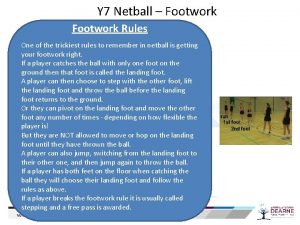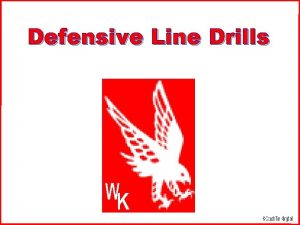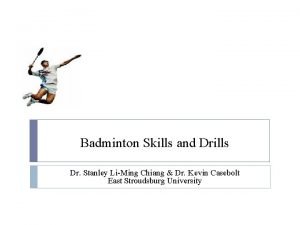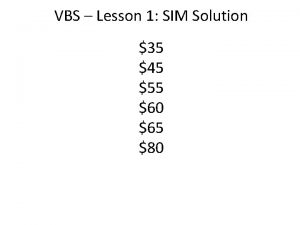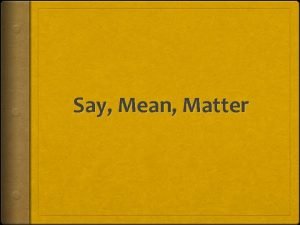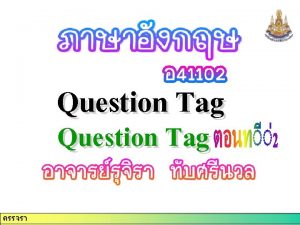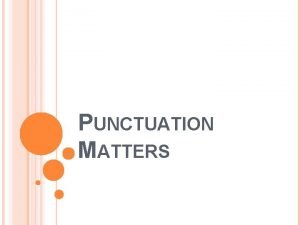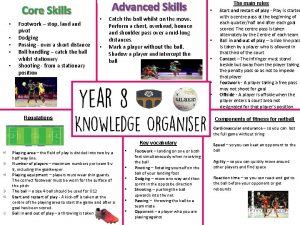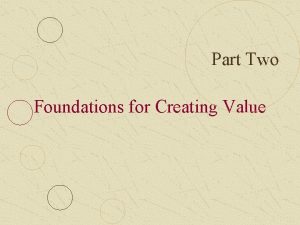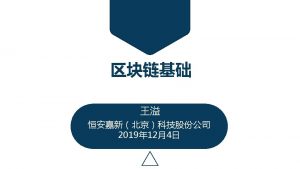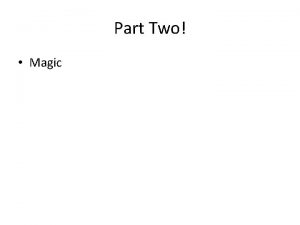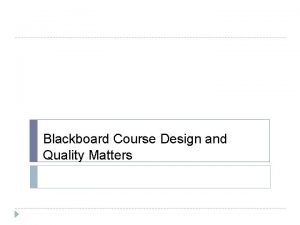01 LEARNING THAT MATTERS PART TWO DEVELOPING FOOTWORK




![IMPLICIT INSTRUCTIONAL APPROACHES „[. . . ] it allows them to perform undisrupted even IMPLICIT INSTRUCTIONAL APPROACHES „[. . . ] it allows them to perform undisrupted even](https://slidetodoc.com/presentation_image_h2/2ed1753b93d11843a865b39f6a768952/image-5.jpg)

























- Slides: 30

01 LEARNING THAT MATTERS PART TWO: DEVELOPING FOOTWORK Implications from World Class Badminton & Modern Pedagogy for Developing Juniors Diemo Ruhnow

Our players… Have you ever had a player… … that played worse in 19: 19 situation … that was choking under external pressure … that is better in training then in tournaments … that struggled with different light, temperature, wind … that struggled with different shuttle speeds … that executed technique good in place and in perfect position. . . that struggled with changing technique, tactics, strategy I have. Solution? It’s not their fault. It’s mine, the coaches! 02 Nater, S. & Gallimore, R. (2005) You Haven't Taught Until They Have Learned: John Wooden's Teaching Principles And Practices Fitness Information Technology, Inc, U. S. (31. Oktober 2005)

INSTRUCTIONAL APPROACHES OF MOTOR LEARNING CONSTRAINTS-LED APPROACH Badminton game as solving a motor learning problem that is constraint by internal, external and task constraints. Coach puts different contraints to the player to make the task easier or harder to solve. Tacical and technical solution as solution of the contraints. TECHNICAL APPROACH (“COGNITIVE SYSTEMS APPROACH”) Badminton game devided into pieces of strokes, footwork, . . . that have to be mastered. Coach teaches / commands and takes (all) decisions in the process. Tactics to be learned while playing after mastering the technique. TACTICAL APPROACH (“GAME-BASED APPROACH”) Badminton game as solving tactical problems. Coach guides, questions and leads towards solutions. Tactical solutions to be understood before the technique is mastered. 03

“How to beat the Chinese” – Nick Winkelman Davids et al. (2007) Dynamics of Skill Acquisition: A Constraints-Led Approach, Human Kinetics, Champaign (USA). “THIS BOOK WILL HELP YOU TO FIND OUT, HOW TO BEAT THE CHINESE. ” - Nick Winkelman (2013) Informal Mentorship 101 Dialogue with DR 04 Fun Fact: Nick changed job from Athletes’ Performance (Head of NFL Combine Training, Head of Education) to Irish Rubgy in March 2016. In November 2016 Ireland beat New Zealands All Blacks 1 st in 111 years, in November 2018 first time at home soil.
![IMPLICIT INSTRUCTIONAL APPROACHES it allows them to perform undisrupted even IMPLICIT INSTRUCTIONAL APPROACHES „[. . . ] it allows them to perform undisrupted even](https://slidetodoc.com/presentation_image_h2/2ed1753b93d11843a865b39f6a768952/image-5.jpg)
IMPLICIT INSTRUCTIONAL APPROACHES „[. . . ] it allows them to perform undisrupted even in the face of stress and other adverse conditions [. . . ]” “Less dependecy on working memory, stability under stress and pressure & stability under secondary tasks” - Poolton, J. & Zachry, T. (2007) Coaching and Learning Through Implicit Motor Learning Techniques. International Journal of Sport Sciences & Coaching, Volume 2 (1). 05

IMPLICIT VS EXPLICIT • Farrow & Abernethy (2002): Training of anticipatory skills with information utilized by expert players. Significant improvement with implicit training, no improvement in explicit and control group. • Smeeton et al. (2005): Training of anticipatory skills, both approaches successful, however the explicit instruction group showed significantly lower responsesunder anxiety-provoking conditions. • Hardy, Mullen & Jones (1996): Implicitly learned motor skillmore robust under stress • Masters (2000): Explicit instruction either predispose players to conscious thought during performance and potentially poorer performance under stress or to overload working memory with performance loss 06

IMPLICIT VS EXPLICIT • Turner et al. (2002): By-product of traditional technical approach is that young players perform quite well during drills, yet not being able to adapt their techniques to the demand of subsequent match play. • Martens, S. & Bastiaens, K. (2005): Coaches of international players have intimated that befenits [of higher contextual interference training]enhances long-term skill retention and learning, not limited to technical or physical but also psychological and tactical. • Williams, A. & Hodges, N. (2005): too much intrinsic feedback breedsover-reliance on the coach and impairs an individuals ability to independently process and evaluate information. • Main Resource: Reid, M. , Crespo, M. , Lay, B. , Berry, J. (2007) Skill acquisition in tennis: Research and current practice. Journal of Science and Medicine in Sport, 10, 1 -10. 07

Implicit Techniques: External Focus • Porter, J. , Wu, W. , Crossley, M. , Knopp, S. , Campbell, O. (2015) Adopting an External Focus of Attention Improves Sprinting Performance in Low-Skilled Sprinters (2015). Journal of Strength and Conditioning Research, 29(4), p. 947953. Result: External cueing significantly faster: 3. 75 sec vs 3. 87 sec • Wulf, G. , Dufek, J. , Lozano, L. , & Pettigrew, C. (2010). Increased jump height and reduces EMG-activity with an external focus. Human Movement Science, 29(3), pp. 440 -448. Result: external focus (32. 4 cm, SE = 3. 05) vs. internal focus (31. 0 cm, SE = 3. 18) and reduced EMG-activity. 08 • Westphal, W. & Porter, J. (2013). Increasing the Distance of an External Focus of Attention has Limited Effects on Standing Long Jump Performance. International Journal of Exercise Science, 6(4), pp. 300309. Result: External cueing significantly better, no difference in 3 m or 5 m attention focus

Implicit Techniques: External Focus • Wulf, G. , Lauterbach, B. & Toole, T (1999). The learning advantages of an external focus of attention in golf. Research Quarterly for Exercise & Sport June 1999, 70(2), pp. 120 -126. Result: External focus more effective in session and in re-test. • Wulf, G. , Mc. Connel, N. , Gärtner, M. & Schwarz, A. (2002). Enhancing the Learning of Sport Skills Through External-Focus Feedback. Journal of Motor Behavior, 34(2), pp. 171– 182. Result: Volleyball service, external focus showed better rated movement quality. 09

Implicit Techniques: External Focus • Lam et al. (2009) Analogy versus explicit learning of a modified basketball shooting task: Performance and kinematic outcomes. Journal of Sports Sciences 27(2): 179 -91. Result: Free Throws Practice Performance (E=A=C), Recall of Explicit Rules (E>C>A), Retention Test (E=A=C), Transfer (A>C=E) • Liao et al. (2001) Analogy learning: A means to implicit motor learning. Journal of Sports Sciences 19(5): 307 -19. Result: Table Tennis Practice Performance (E=A=I), Recall of Explicit Rules (E>I=A), Retention Test (E=A=I), Transfer (A=I>E) • Poolton, J. & Masters , S (2006) The influence of analogy learning on decisionmaking in table tennis: Evidence from behavioural data. Psychology of Sport and Exercise 7(6): 677 -688. Result: high-complexity decisions caused a relative performance deterioration in the explicit condition, but not in the Analogy condition 10

IMPLICIT LEARNING: ISN’T THAT JUST GREAT? • • • Being faster, jump higher, anticipate better Faster learning Robust learning Better transfer Better movement quality Less muscles force needed for higher force production More working memory Secondary task options More robust under pressure and anxiety 11

IMPLICIT LEARNING: SO WHAT IS THE F** PROBLEM? • It’s me! It’s us! 12

DILEMMA: COACHING METHODS LAW OF INSTRUMENTS (MASLOV): „WHEN YOU ONLY HAVE A HAMMER, EVERYTHING LOOKS LIKE A NAIL. “ Dilemma in Creation of Coaching Knowledge: Coaches often use methodes and approaches they experienced as athlete or the used as coaches and interpreted positivly independly from a large existing body of formal coaching education. Formal coaching education is useless to influence the action undertaken by coaches. So: more than only knowledge and methods, theory and practice with critical evaluation and formal and structured informalcoaching education and ongoing education like mentoring, talks and guided talks between coaches need to be installed. - Piggot, D. (2011) Coaches’ Experiences of Formal Coach Education: A Critical Sociological Investigation. Sport, Education and Society 7(4), S. 535 -545 THESE DILEMMA LEADS TO „NEW METHODS“ ONLY SLOWLY DIGEST INTO COACHING PRACTICES.

IMPLICIT VS EXPLICIT LEARNING PURE IMPLICIT LEARNING • Learn to speak • Learn to crawl, walk, … EXPLICIT LEARNING EXAMPLES • Learn a foreign language in school • Learn through a manual • Learn through instruction IMPLICIT LEARNING TECHNIQUES • • Teaching Games for Understanding Differential Learning Technique Training with Differences Errorless Learning Analogy Learnen External Cueing Peer Learning / Teaching 14

TRANSITION • These are facts • Now let’s get to work! 15

EXAMPLE: MIXED IMPLICIT METHODS VIDEO: F 1 SHADOW FOOTWORK ART OF COACHING (7: 25) 16

EXAMPLE: MIXED IMPLICIT METHODS VIDEO: F 2 IMPLICITE STARTING (3: 25) 17

EXAMPLE: GAME BASED APPROACH VIDEO: F 7 FOOTWORK TACTICAL BACK COURT (2: 30) 18

EXAMPLE: GAME BASED APPROACH VIDEO: F 8 TACTICAL FOOTWORK LIVE SHUTTLE (1: 30) 19

EXAMPLE: HOW I LIKE TO WORK (MIXED & MATCH) VIDEO: F 4 FOOTWORK TRANSPORT FUNDAMENTALS (3: 03) 20

EXAMPLE: HOW I LIKE TO WORK (MIXED & MATCH) VIDEO: F 5 FOOTWORK STARTING TECHNICAL APPROACH (3: 05) 21

MY THOUGHTS ON FOOTWORK DEVELOPMENT ZYKLUS DER BEINARBEIT Gegnerischer Treffpunkt Schlagvorbereitung Erkennen Ausrichtung • Position • Transfer • Täuschung Reagieren Korrigieren Decken Analysieren Spekulieren Gegnerischer Treffpunkt Eigener Treffpunkt Übergang 3 -Dimensional 4 Möglichkeit Lauf 2 x Hüpfer Kreuzen Sidestep Gegnerischer Treffpunkt Antizipieren Schlagnachbereitung Korrigieren Hüfte/Füße Starten • Drop-Step • Punch-Step • Step-Out Nachbereitung • Feldposition • Körperlage • E. T. A. Gegner-Ball • Übergang: � Push-Step � Recovery-Step � Kreuzen � Sidestep � Lauf � Doppelhüpfer Gegnerischer Treffpunkt 22 "Neutrale Position" - Split step • Statisch-Angepast (3 D) • Statisch-Neutral (3 D) • Dynamisch-Angepast (3 D) • Dynamisch-Neutral (3 D)

FOOTWORK LINE OF PERFORMANCE EXAMPLE - DIFFERENT FOOTWORK TECHNIQUE IN THE REAR COURT FOREHAND CORNER . . . Lunge in Rear Court China jump flat (MAL) China jump high (INA) Hip turn Half scissors jump Scissors jump 23 Jumpsmash (MAL) Jumpsmash (KOR)

BIGGEST POSSIBLE FOUNDATION… • Fundamental Multidirectional Movements � Linear � Lateral � Change of direction � Jumping & landing • Badminton Specific Movements • Now cook & spice it up! � But German food always? ? ? 24

BIGGEST POSSIBLE FOUNDATION… • KOR � Value & System Sport � Balance „wide low lateral movements“ � High jumps backcourt (Høi) • MAS � Differentiated stroke definitions � LCW idol: calm & quick start � Flat jumps backcourt (Høi) • INA � Equivalent to soccer in Brazil � Culture of Badminton & Joy � Idols are Heroes, “we“ are small stars � Budi Santoso: 3 Circles � Rhythm – Dancing Badminton 25

BIGGEST POSSIBLE FOUNDATION… • CHN � Value & System Sport � Idols & Number of Coaches � High Volume almost no instruction � Single components in highest ever volume � Long open exercises • JPN � Kaizen in japanese culture � Japan always had good players, now they have. . . Park Joo Bong (KOR) ■ DD China ■ HD Indonesia ■ DE Japan ■ MX Malaysia ■ HE Japan 26

GER • German Virtues • „Akribische“meticulous coaches � Finding solutions � Using Science � Inventing the wheel (Pro/Con) • Trial an error • Looking outside � Inspiration � Foreign Coaches USA • Biggest expericence in professional game sports • Professional self-reproducing sport system • Value of sports • Academics in sports – but in practice! ESP • • • Believing & Goals: Rivas Marin Team around Rivas Marin Identify World Class Planing World Marginal Gains DK • • Tradition (TV, Idols, Coaches) Game-Based Approach Danish Culture Club System

LONG TERM DEVELOPMENT • Idea (Be careful) � Elements � Links • Build skills not techniques Mixed it up & put it into constraint context! 28

WHAT WE NEED. . . WHAT I MISS. . . (FOOTWORK) • Offensive Footwork WHAT I MISS THE MOST. . . � Long ways (also in doubles) • Different foot positions (agility, adaptibility, tactics) � Big steps / jumps vs small steps / jumps � Footwork tactic � Change of direction & adaptations • Different distances with different number of steps • Balanced, quick-agile footowork („Badminton Messi“) � Small steps • Light-foodtedness � Quick feet � Quickness � Different body positions � Injury Prevention � Agility, e. g. left-right seperations � Triple Jumps Backward • Complex agiliy & biomechanics • Return from corners is change of directions (not more) � Transfer of force. Stroke to footwork adaptations • Combining (America & China (Japan? )) & Denmark • Change of speed via footwork Spain? • Defensive Footwork � Adaptation & corrections • Rhythm & feeling • Economy 29

30 LEARNING THAT MATTERS Diemo Ruhnow INNCO INNOVATION | COMMUNICATION
 Phân độ lown
Phân độ lown Block nhĩ thất độ 2 mobitz 1
Block nhĩ thất độ 2 mobitz 1 Thơ thất ngôn tứ tuyệt đường luật
Thơ thất ngôn tứ tuyệt đường luật Thơ thất ngôn tứ tuyệt đường luật
Thơ thất ngôn tứ tuyệt đường luật Walmart thất bại ở nhật
Walmart thất bại ở nhật Tìm vết của đường thẳng
Tìm vết của đường thẳng Con hãy đưa tay khi thấy người vấp ngã
Con hãy đưa tay khi thấy người vấp ngã Tôn thất thuyết là ai
Tôn thất thuyết là ai Gây tê cơ vuông thắt lưng
Gây tê cơ vuông thắt lưng Sau thất bại ở hồ điển triệt
Sau thất bại ở hồ điển triệt What is the footwork rule in netball
What is the footwork rule in netball Defensive end contain drills
Defensive end contain drills Manipulative skills in badminton
Manipulative skills in badminton Cuadro comparativo entre e-learning b-learning y m-learning
Cuadro comparativo entre e-learning b-learning y m-learning Part part whole addition
Part part whole addition Part to part ratio definition
Part to part ratio definition Part part whole
Part part whole What is technical description
What is technical description Bar part
Bar part The phase of the moon you see depends on ______.
The phase of the moon you see depends on ______. Minitab adalah
Minitab adalah Concessions sim answers
Concessions sim answers Your mind matters meaning
Your mind matters meaning Mean say matter
Mean say matter Race matters for juvenile justice
Race matters for juvenile justice Nothing matters question tag
Nothing matters question tag Punctuation is important
Punctuation is important Why productivity matters
Why productivity matters Care matters nationwide
Care matters nationwide Money matters topic
Money matters topic Ola miami.performance matters
Ola miami.performance matters










